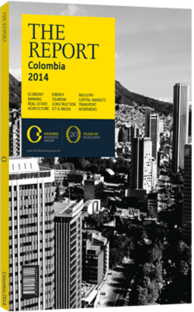OBG talks to Carlos Raúl Yepes Jiménez, President, Bancolombia

Interview: Raúl Yepes Jiménez
Who benefits most from growth in banking penetration rates – the economy, banks or the people?
RAUL YEPES JIMENEZ: While the banking penetration rate shows a positive evolution, there is still a vast market to be developed. In mid-2013, a total of 21.6m people, or 69.2% of the adult population, used at least one financial product, compared to 55.5% five years ago. There are opportunities in all socioeconomic and business sectors. Such development should help all stakeholders – starting with the citizens – and should contribute to a more organised society. To increase penetration levels, local banks are focusing on relationships with communities, building new risk models and on designing efficient distribution models that foster self-management, mobility and online banking.
How much have consumer loans grown, and what level of risk are banks willing to take?
YEPES: After the deceleration that started at the end of 2011, the Colombian loan portfolio has recently shown signs of stabilising. In November 2013 its value reached $253.6bn, an increase of 12.5% on a year earlier, and it continues to grow at more than twice the rate of the economy: in the third quarter of 2013, GDP rose 5.1% year-on-year. Credit establishments are offering capital to people and businesses according to need.
Consumer loans in the last couple of years have registered a nominal average annual growth rate of 11.3%. The main reasons for this increase are the reduction in poverty levels and unemployment, and the robust economic growth of the past five years. Although growth in consumer credit may seem slight in light of its peak in 2011, there are signs that this area is recovering: in the year to November 2013 it grew 10.6% in real terms, and is expected to grow at 9.8% going forward.
What has been the effect of Basel III on capital requirements for Colombian banks?
YEPES: The chief means of generating trust and security in the financial sector is to implement Basel III, which obliges banks to show they have enough capital to survive possible international financial crises that could have local repercussions. Recent modifications to Colombia’s banking industry require banks to hold capital of at least 9% of risk-weighted assets. Thus Colombia is getting closer to Basel III norms.
This could be a great moment to adopt more conservative measures with regard to capital investment levels, considering the banking sector’s promising growth, the low levels of penetration, the sector’s rapid expansion abroad and the solid profits of most banks. Bancolombia currently meets Basel III capital requirements and, with the next round of stock we are planning to issue, we will have a higher percentage of capital to continue meeting that standard.
Is the launch of the Integrated Latin American Market (Mercado Integrado Latinoamericano, MILA), a positive development?
YEPES: The entrance of Mexico into MILA will increase the number of issuers from 511 to 649, making it the largest market in the region with a capitalisation of $1.1bn. However, we do not expect this to mean that MILA will have larger volumes immediately. Since its creation, MILA has reached only $236bn in total transaction value, a small number compared to the activity in each of the member markets. Chile leads in number of transactions, with 78.82%, followed by Colombia (15.46%) and Peru (5.73%). Despite Mexico’s entrance, we do not expect this to have a major effect.
The barriers to MILA’s development are currency exchange, information gaps and differences of fiscal policy between countries. Even so, we believe that MILA, as an integration of Latin American markets, will be a positive long-term development. The problems will be resolved, leading to better information on issuers, a clear vision of financial results and an increase in the value of each market. Once this happens, we will see strong growth in transaction volumes, which will further diversify investments, reduce risk and boost returns.
You have reached the limit of premium articles you can view for free.
Choose from the options below to purchase print or digital editions of our Reports. You can also purchase a website subscription giving you unlimited access to all of our Reports online for 12 months.
If you have already purchased this Report or have a website subscription, please login to continue.

